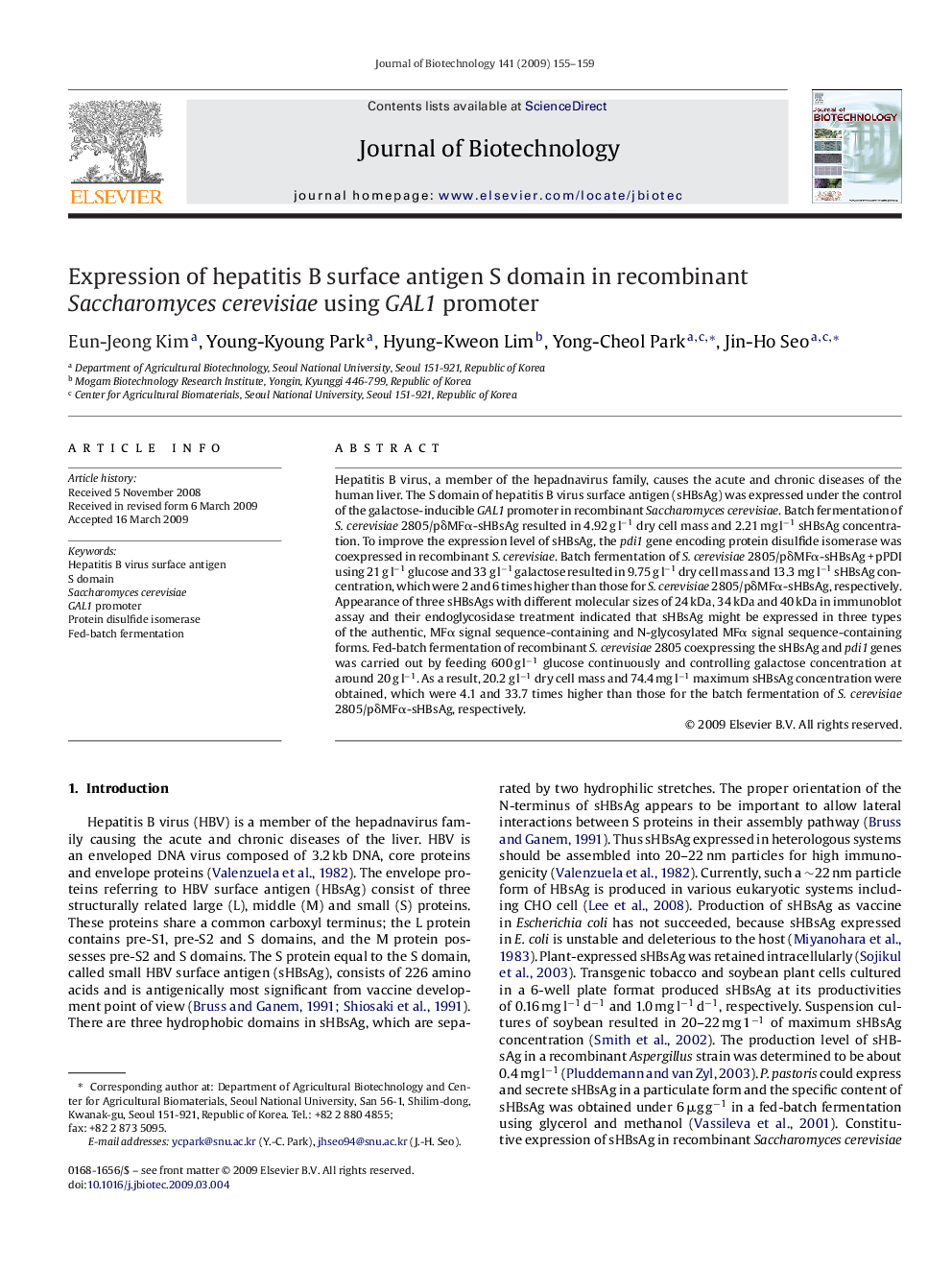| Article ID | Journal | Published Year | Pages | File Type |
|---|---|---|---|---|
| 24795 | Journal of Biotechnology | 2009 | 5 Pages |
Hepatitis B virus, a member of the hepadnavirus family, causes the acute and chronic diseases of the human liver. The S domain of hepatitis B virus surface antigen (sHBsAg) was expressed under the control of the galactose-inducible GAL1 promoter in recombinant Saccharomyces cerevisiae. Batch fermentation of S. cerevisiae 2805/pδMFα-sHBsAg resulted in 4.92 g l−1 dry cell mass and 2.21 mg l−1 sHBsAg concentration. To improve the expression level of sHBsAg, the pdi1 gene encoding protein disulfide isomerase was coexpressed in recombinant S. cerevisiae. Batch fermentation of S. cerevisiae 2805/pδMFα-sHBsAg + pPDI using 21 g l−1 glucose and 33 g l−1 galactose resulted in 9.75 g l−1 dry cell mass and 13.3 mg l−1 sHBsAg concentration, which were 2 and 6 times higher than those for S. cerevisiae 2805/pδMFα-sHBsAg, respectively. Appearance of three sHBsAgs with different molecular sizes of 24 kDa, 34 kDa and 40 kDa in immunoblot assay and their endoglycosidase treatment indicated that sHBsAg might be expressed in three types of the authentic, MFα signal sequence-containing and N-glycosylated MFα signal sequence-containing forms. Fed-batch fermentation of recombinant S. cerevisiae 2805 coexpressing the sHBsAg and pdi1 genes was carried out by feeding 600 g l−1 glucose continuously and controlling galactose concentration at around 20 g l−1. As a result, 20.2 g l−1 dry cell mass and 74.4 mg l−1 maximum sHBsAg concentration were obtained, which were 4.1 and 33.7 times higher than those for the batch fermentation of S. cerevisiae 2805/pδMFα-sHBsAg, respectively.
